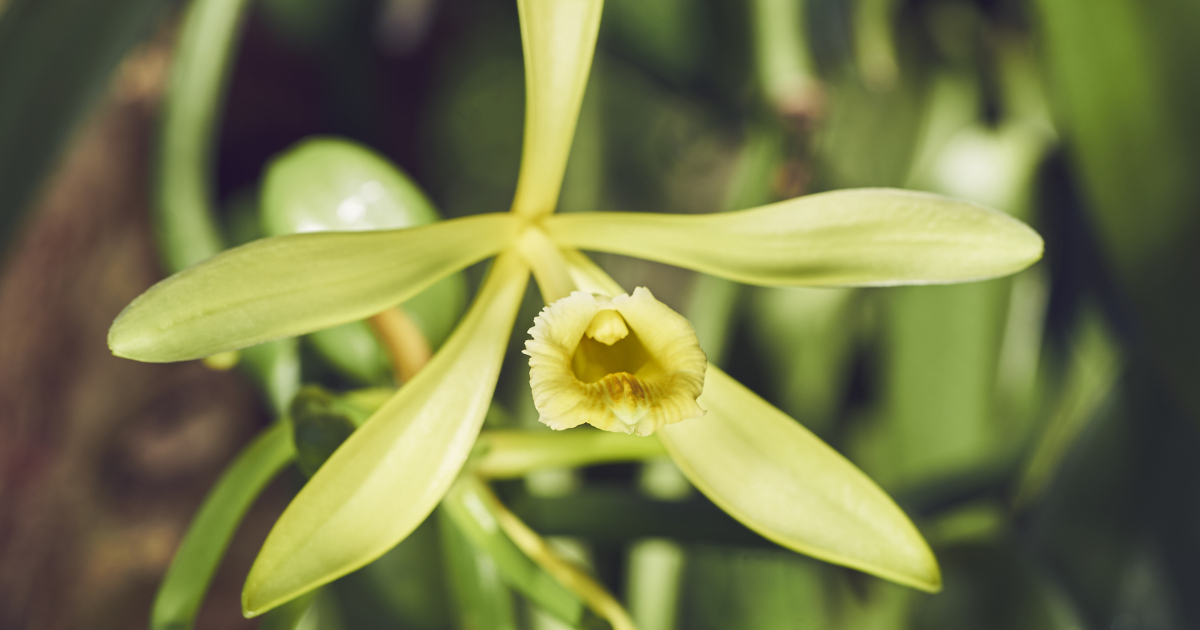Cette publication est également disponible en :
Français
On the occasion of the International Exhibition of Raw Materials for Perfumery (SIMPPAR) which will take place on May 31 and June 1 in Paris, we invite you to discover a series of articles originally published in the book From Plant to Essence. A World Tour of Fragrant Raw Materials. Let’s find out more about the Malagasy vanilla bean grown by Floribis, with whom Mane has established a partnership since 2000, that Julie Massé talked about in an article also published on the site.
It is now 40 years since Mane set up business in the Sava region of Madagascar, the vanilla capital of the world. The French composition house works hand in hand with its expert local partner to produce vanilla absolute, a Jungle Essence, a vanilla oil and an infusion that inspire perfumers and flavorists alike. The women, or marieuses, who hand-pollinate vanilla flowers arrive at the plantations early in the morning. From October to December, these “matchmakers” seek out the vanilla flowers ripe for pollination and delicately rub the pistil and stamen together, using a needle or lemon tree thorn. The precision of their gestures attests to the vital importance of a skilled local workforce in the vanilla industry. The Sava region, in northeastern Madagascar, is the world’s leading grower of the sought-after crop. The coastal region’s hot, humid climate is perfect for vanilla, which has to be cultivated in partial shade in special orchards. The trees, generally gliricidia or other species native to the island, offer this essential shade and support to the vines that grow the precious pods. Vanilla is a significant source of income for Madagascar, though it has fluctuated wildly in price over the past 20 years. “Its cost can vary from US$100 to $600 per kilo, depending on the quantity grown, the vanillin content and, above all, financial speculation. That’s why it’s so important to have strong roots and stable partners in Madagascar,” points out Clément Toussaint, natural and sustainable strategic sourcing manager at Mane.
The French composition house has been a pioneer on the island, where it set up business 40 years ago, establishing a partnership with sector leader Floribis in 2000 to support the formation of a sustainable, traceable, responsible supply chain. “Vanilla is one of the most important raw materials for Mane, and it’s essential for us to look after the unique skills of those who produce it.” Prepared in three steps The painstaking process of preparing vanilla reflects the scale of their expertise. Nine months after pollination, between July and September, it is time to harvest the pods, even if their fragrance is still weak at this stage. The pods are ripe when they turn pale green, verging on yellow. This guarantees the quality of the processed vanilla.
The pods are treated within two to three days of harvesting to maintain the quality of the odiferous compounds. The vanilla is traditionally prepared in three steps. First, the pods are scalded for three minutes in water heated to 65°C to draw out the vanillin, the molecule responsible for the raw material’s characteristic scent. Next, they are left to steam for 12 hours in wooden boxes lined with wool blankets to keep the heat in. The pods begin to turn black and are then sun-dried on racks for a week or two, depending on the climate, then in the shade for a month. The pods wrinkle and blacken. They are next sorted by feel and smell. The ones deemed ready for further processing are shipped to the Mane factory outside Grasse, where the extract is produced.
This article was originally published in the book From Plant to Essence. A World Tour of Fragrant Raw Materials, by Nez.
Main visual: © Mane








Comments